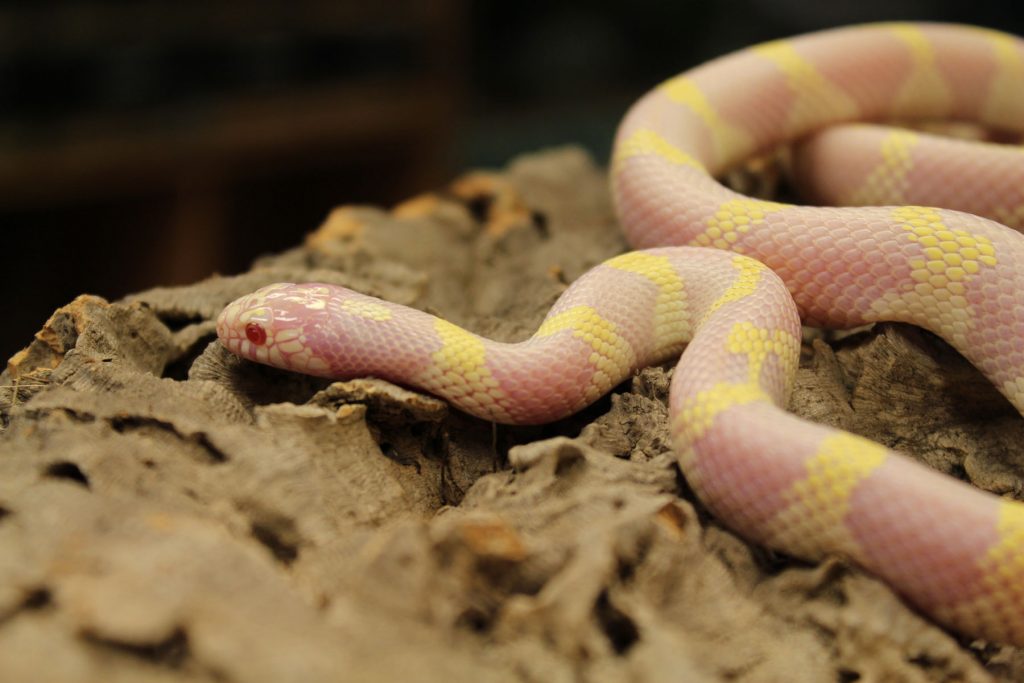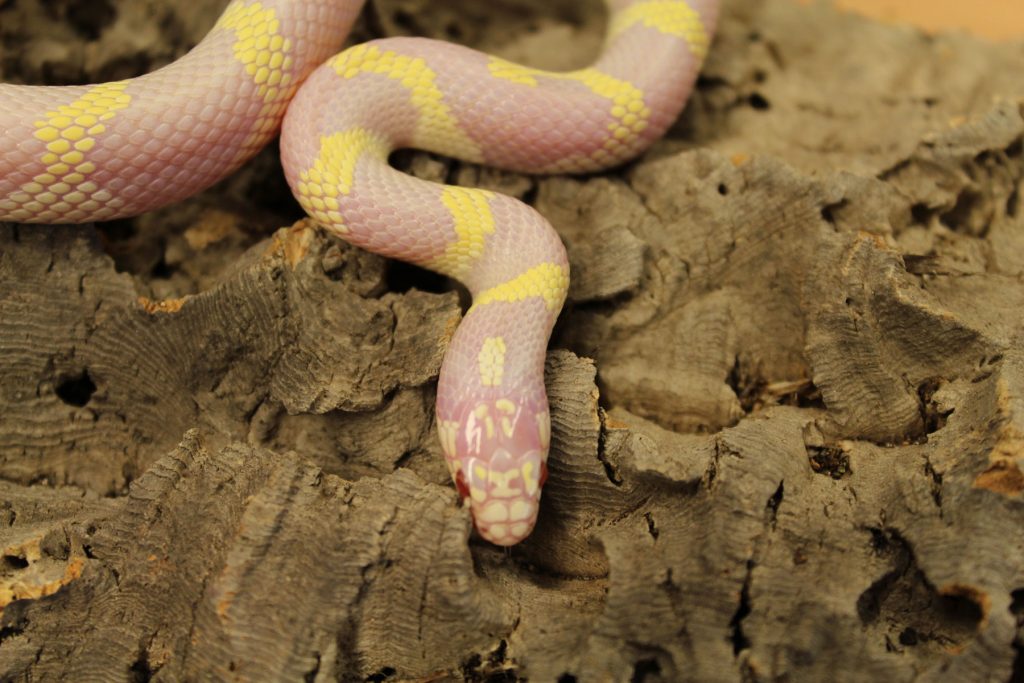Copyright 2021 Evolution Reptiles
All rights reserved.
Copyright 2024 Evolution Reptiles
All rights reserved.
All rights reserved.
California King Snakes are a diurnal snake found across the western USA and northern Mexico in forests, deserts, grasslands, mountains, fields, coastal and suburban areas, and many other habitats as long as there is sufficient prey and shelter. The name King Snake comes from the ability to eat other snakes including rattlesnakes; California Kings (often known as just ‘calis’) are naturally impervious to the venom of rattlesnakes, which they consume regularly, but are not totally immune. As well as snakes they will also eat rodents, birds, reptiles and amphibians – they are great generalists, adapted to make the most of whatever food is available. In captivity they are notorious for an ability and willingness to eat anything!

California Kingsnakes are most commonly patterned with a ground colour of black with white bands or a single stripe down the middle of the back, although there are many colour morphs now available. Despite being referred to as being one of the smaller king snake species at 120cm (4’), they can grow up to 180cm (6’).
We have found, over the years, that it works perfectly well to place a hatchling into an adult sized enclosure, provided that there are sufficient hides to allow the baby snake to feel safe. (A good rule of thumb is that if the snake can move from one side of the enclosure to the other without showing itself, you have enough hides.) A 90cm (3’) vivarium can be used, but a 120cm (4’) is much better, as these are robust and active snakes that appreciate a good bit of space.
King snakes should be kept separately as they are ophiophagus (snake eaters!)

King snakes require a temperature gradient of 25°C to 30°C during the day; this can be achieved by using a deep heat projector and a basking light on thermostats mounted at one side of the vivarium to create a warmer side. At night the temperature should drop to around 20°C to 25°C. A simple 12 hour light cycle is ideal for king snakes. UV lighting is recommended, although not considered essential.
The snake will require hides in the vivarium so that it can feel secure. By having several in different areas of the vivarium the snake will be able to choose the one that is at the best temperature. A humid hide is also recommended, hollow hides with a damp moss inside which snakes will often use when they are shedding their skin. Plastic plants are also good to use, as these look very attractive in the vivarium as well as offering privacy. Live plants can work as part of a bioactive setup, but most plants will be flattened or dug up by a curious snake.
Feed your snake one defrosted mouse weekly, which should be no bigger than the largest part of the snake. King snakes can eat mice their entire lives, although they do appreciate a little variety and can be offered gerbils, hamsters, rats and chicks as they mature. Calis are notoriously greedy! Resist the urge to feed your snake more often or larger prey as this can lead to the snake growing too fast, which can result in the head of the snake not growing at the same speed as the rest of the body. Obesity can also be a problem. If a snake is overfed they have no reason to move around their vivarium and this is detrimental to their health.
Common name: California King Snake
Scientific Name: Lampropeltis getula californiae
Location: Western North America down to Mexico
Habitat (wild): Dry, open woodland, rocky scree, grassland, gravel/sand deserts, farmland
Captive environment: Dry tropical vivarium, UVB optional
Preferred temperature range: Daytime hot spot of 32ºc under the basking light, background ambient of 30ºc, cool end of 25º. Temperature can drop to 20ºc at night.
UVB Lighting: 5% or 10% UVB strip lamp, compact UVB with a guard (optional)
Ferguson Zone: Zone 2
Substrate: Wood chip, aspen, or lignocel
Lifespan: 10 to 15 years, but can be considerably longer – over 20 years in some cases.
Copyright 2021 Evolution Reptiles
All rights reserved.